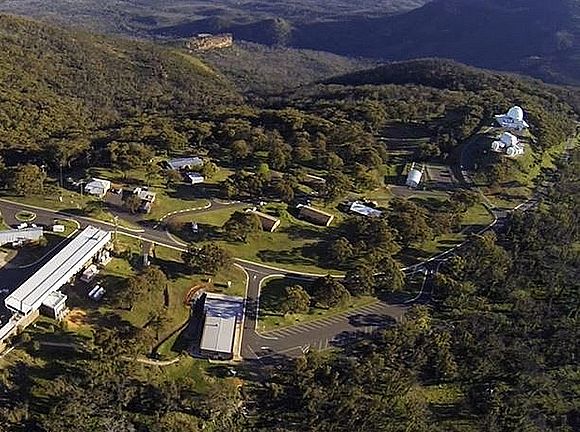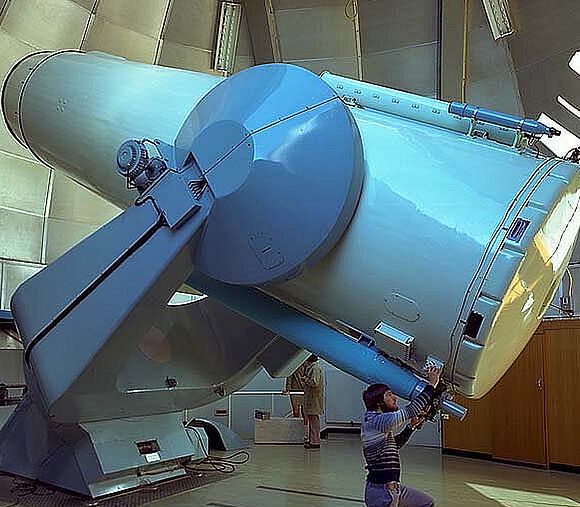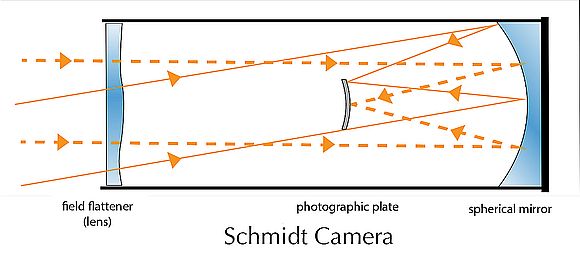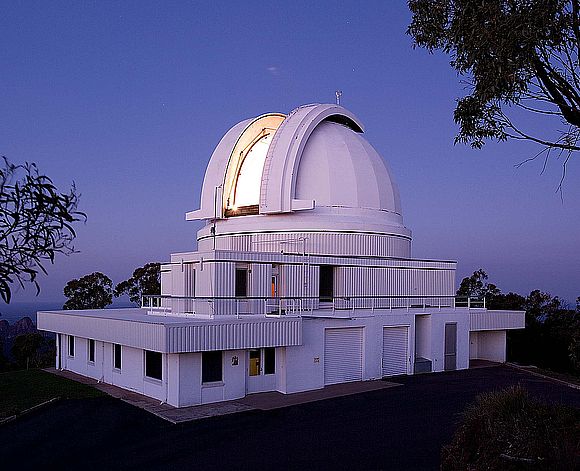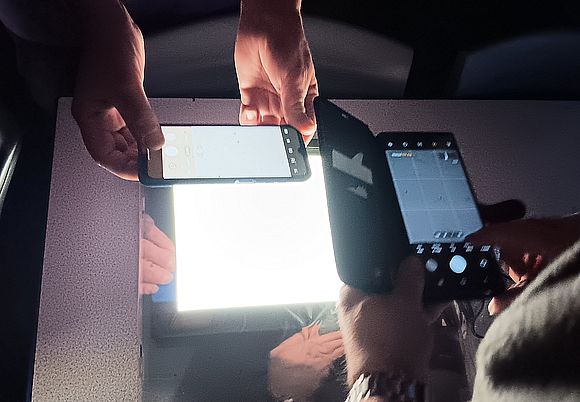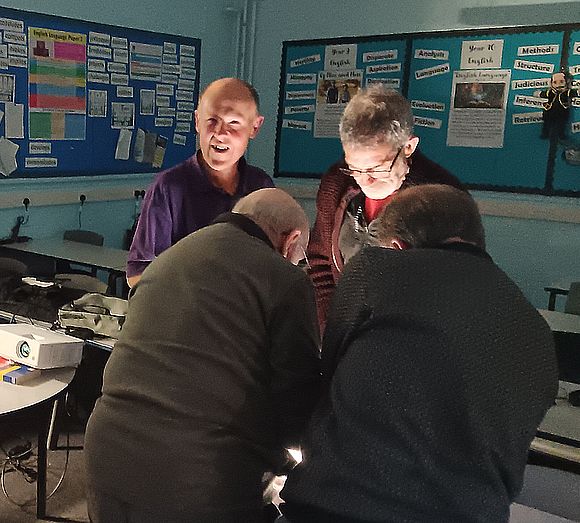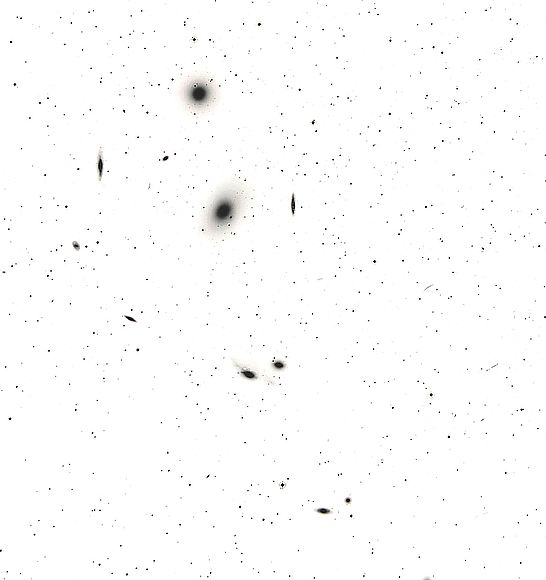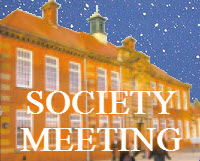
Monthly society meetings concluded this season with an engaging and informative presentation by society member Paul Cass on the Anglo-Australian Schmidt telescope facility. This was a revisitation of his talk in January, yet it presented new and different insights.
Paul has over 25 years of experience working at the facility, which is located at Siding Spring in New South Wales, Australia. This renowned facility hosts more than 30 domes and buildings, accommodating approximately 40 telescopes of various designs and sizes, including the 3.9m AAT, the 2.3m AAT scope, and the 1.24m UK Schmidt scope.
Paul reworked the talk he delivered in January, providing more information on the Schmidt design concept developed by Bernhard Schmidt in 1930. This design enabled astronomers to photograph large areas of the sky at visible wavelengths, allowing them to observe large-scale structures without introducing coma, astigmatism, and spherical aberration.
This was achieved by using a large spherically shaped mirror instead of the typical paraboloidal mirror of a reflector telescope and a smaller apertured diaphragm placed at the centre of curvature of the mirror. Schmidt discovered that spherical aberration could be eliminated by placing a thin, very weakly curved aspheric lens (now known as a Schmidt corrector plate) at the same centre of curvature as the apertured diaphragm.
This innovation facilitated the development of a large camera featuring an f/1.75 aperture or faster, capable of producing sharp images across a field exceeding 15 degrees in diameter. This advancement enabled the capture of extensive regions of the sky with brief exposure times. Regrettably, Schmidt passed away in 1935 before witnessing the complete realization of his concept, as the implementation of his initial design progressed at a slow pace.
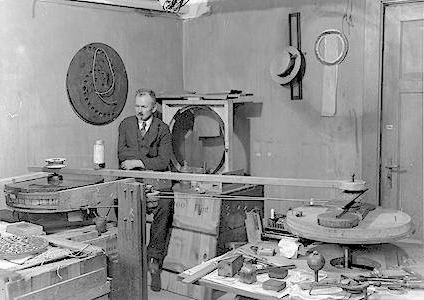
Bernard Schmidt in his workshop. (Click for full image)
Paul detailed how in 1971, the then Science Research Council (SRC) established the UK Schmidt Telescope Project as an independent venture with the design, construction and operation under the direction of V C Reddish and set up a special Unit at the Royal Observatory, Edinburgh (ROE). Grubb Parsons & Company Limited of Newcastle-upon-Tyne began work on the Schmidt Telescope in June 1971, the company also fabricated the AAT mirror and tube assembly. In May 1973 the telescope was delivered to Siding Spring and was formally opened that August.
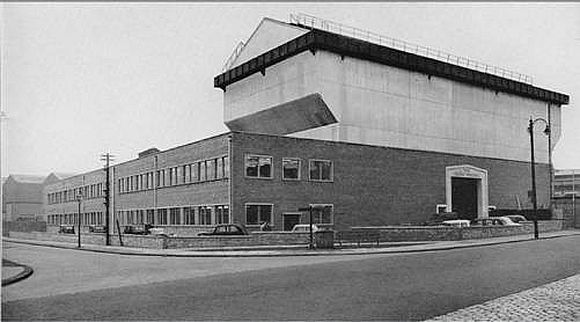
The Grubb-Parsons factory - Tyneside. (Click for full image)
The Schmidt telescope captures images of the sky 6x6 degrees in area and allowed a complete photographic survey of the southern sky to be accomplished. The telescope had taken a total of some 19,500 celestial images by the time it was mothballed.
Paul's main jobs whilst he was at the Schmidt facility included observing with the telescope (photography and later multi object spectroscopy), processing and copying photographic survey plates, which was often undertaken in a complete dark environment. He was also employed analysing and distributing spectroscopic data. All these jobs came under the title of Technical Officer at the Anglo Australian Observatory. On occasions Paul had time to visit the main 3.9m AAT scope, sitting in the scopes focal equipment basket high above the main mirror on several occasions.
WDAS members crowd round the lightbox - trying to image a UK Schmidt plate copy, Paul watches on. (Click for full image)
Paul ended the talk by showing some negative plate copies of the sky using a illuminating light box. It is also a rare opportunity to see firsthand genuine full-size Schmidt negative plate copies and the detail on them was amazing. We all crowded round to take images of the examples - the Virgo cluster plate was particularly noteworthy.
Our final meeting this side of summer was concluded in fine style by Paul, greatly enjoyed by all those present.
- Log in to post comments

